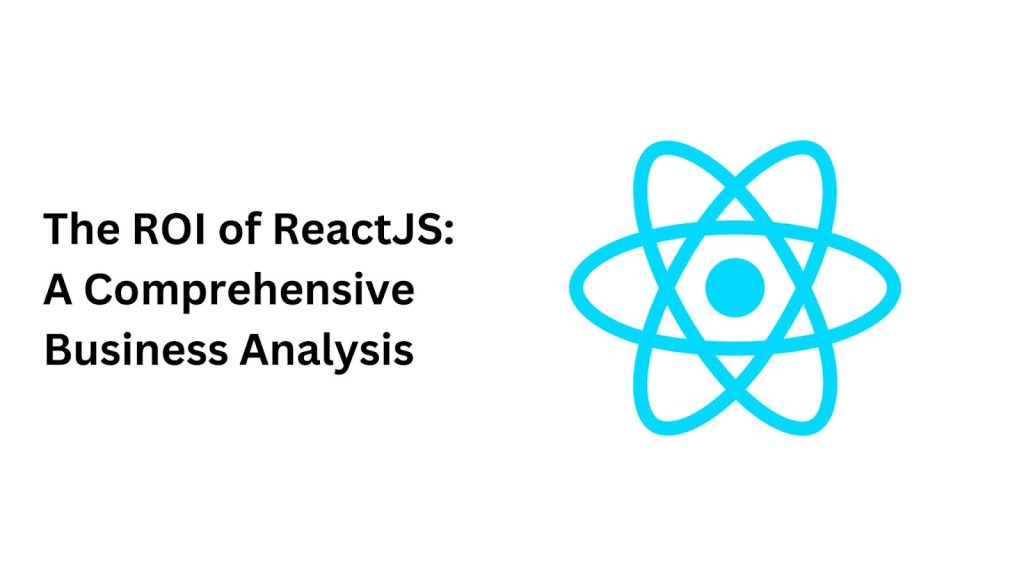
React.js have become popular since the inception of the React.js library. This javascript-based library has become a popular choice for building application user interfaces. As user needs are evolving and new devices have emerged in the past few years, there are situations when businesses decide to replace their existing frameworks with react.js or work alongside react.js based on evolving project development needs. Although the choice between frameworks such as Angular, Vue, Ember, Meteor, Backbone, and others with react.js is subject to the requirement, but ROI plays a critical role in decision-making. Let’s delve into a comprehensive business analysis guide and examine how adopting react.js development services impacts key facets of digital application performance and success.
- Development Efficiency
ROI Metric: Reduction in development time and effort.
Consideration
One of the hallmark benefits of ReactJS lies in its ability to boost development efficiency. The component-based architecture allows developers to create reusable UI elements, cutting down on redundant code. This not only accelerates development but also enhances maintainability. The virtual DOM, a lightweight in-memory representation of the actual DOM, minimizes the need for frequent browser updates, resulting in faster rendering times. Consequently, development teams can deliver feature-rich applications in shorter time frames.
- Cost Savings
ROI Metric: Overall reduction in project costs.
Consideration
In the business world, time is money. ReactJS’s efficiency gains directly translate into cost savings. The reduced development time means fewer hours billed, contributing to a more budget-friendly project. Businesses adopting ReactJS often find that the long-term financial benefits outweigh the initial investment in learning and implementation. As development cycles become more streamlined, organizations can allocate resources more effectively, optimizing their overall expenditure.
- Improved User Experience
ROI Metric: More engagement on application and less dropouts
User experience is a critical metric in the success of any digital application. ReactJS, with its virtual DOM and seamless state management, ensures a smoother and more responsive user interface. This directly translates to heightened user satisfaction, reduced bounce rates, and increased engagement. By prioritizing user experience, businesses retain their user base and attract new customers, fostering sustained growth.
- Scalability
ROI Metric: Ability to scale the application with ease.
Consideration
As businesses evolve, so do their digital applications. ReactJS’s component-based architecture lends itself well to scalability. Building on the foundation of reusable components, organizations can quickly expand and enhance their applications to meet growing demands. This scalability factor ensures businesses can adapt to changing market needs without undergoing extensive and costly redevelopment processes.
- Learning Curve
ROI Metric: Time and resources invested in training.
Consideration
How soon a developer or a team picks a new framework or tech stack plays a crucial role in a project’s success and go-to-market strategy. Since react.js is a javascript framework, and more importantly, it is available and widely adopted in the marketplace, it’s comparatively convenient to find skilled react.js developers for your project.
- Compatibility and Integration
ROI Metric: Smooth integration with existing systems.
Consideration
Since react.js can be a complete replacement of a framework or can be parallelly used with other technologies and tools, you must evaluate how well it integrates with your current tech stack. A framework that seamlessly integrates with existing tools and technologies can minimize integration challenges and associated costs. Since react.js comes with many supporting libraries, plugins, and other tools such as Redux or Hooks, it easily integrates with other frameworks or technologies such as MERN stack. It is a complete replacement of MEAN stack.
- Business Outcomes
ROI Metric:
Consideration
Ultimately, the success of a digital application is measured in tangible business outcomes. ReactJS contributes to improved time-to-market, reduced development costs, enhanced user satisfaction, and increased scalability. Businesses that have embraced ReactJS report higher conversion rates, improved customer retention, and a competitive edge in the market.
Conclusion
In this comprehensive business analysis of ReactJS, we reveal its transformative impact on digital applications. From optimizing development costs and time efficiency to elevating user experience and driving positive business outcomes, React.js is a strategic asset for organizations navigating the digital landscape. As businesses seek react.js app development agency that meets current needs and positions them for future growth, hiring react.js developers from them helps them become a clear frontrunner.
